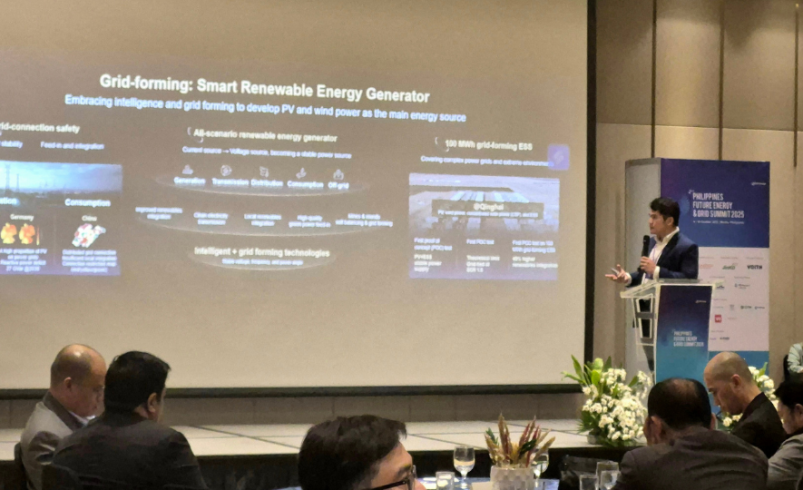Huawei showcases grid-forming BESS at 2nd Philippines Future Energy and Grid Summit
- October 28, 2025
- 0

Huawei Technologies Philippines is advancing its vision of “future-proof” energy storage through innovations that strengthen both safety and grid reliability—key enablers of renewable-ready power systems.
At the 2nd Philippines Future Energy and Grid Summit, Jeffrey Calderon, Chief Operating Officer of Huawei Technologies Philippines’ Digital Power Business, presented the company’s next-generation Battery Energy Storage Systems (BESS).
Calderon said Huawei’s BESS is designed with multi-layered safety controls—from the cell level to the grid level—to mitigate risks such as thermal runaway and grid disturbances. “If there will be any caused fire, the propagation of fire should not affect the next container,” he said, adding that systems must also be protected from overcharging or discharging caused by grid faults.
The system, certified by TÜV (Technischer Überwachungsverein)—a globally recognised German association of independent testing and certification bodies—was demonstrated in a live simulation showing zero ignition even under induced fault conditions.
Beyond safety, Calderon highlighted the importance of grid-forming technology—battery-based systems capable of replicating the behavior of traditional generators to maintain voltage, frequency, and inertia.
“Grid-forming is very important in achieving grid stability from the voltage to frequency to phase angle, even to the inertia of the system,” he said.
He explained that this capability will be crucial as the Philippines increases renewable energy integration, noting that other countries such as Australia and those in Europe are already deploying similar systems. Huawei’s grid-forming batteries are currently used in projects such as the largest microgrid in Saudi Arabia, a mining microgrid in Peru, and a rural installation in the Amazon region.
Calderon also pointed out the growing relevance of battery storage beyond the utility scale—including electric vehicle charging and residential rooftop systems—as battery economics improve. “Solar and energy storage must go hand in hand to achieve a successful transition to carbon neutrality,” he said.
Huawei said its ongoing innovations aim to make renewable-heavy grids safer, more stable, and better prepared for the next phase of Southeast Asia’s clean energy transition.
Can technologies like Huawei’s grid-forming BESS help make renewable-heavy grids more stable and secure? Let’s talk about it.
Follow Power Philippines on Facebook and LinkedIn or join our Viber community for more updates.